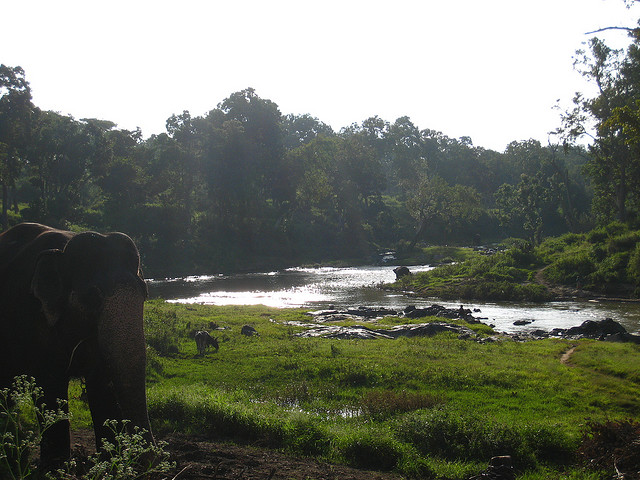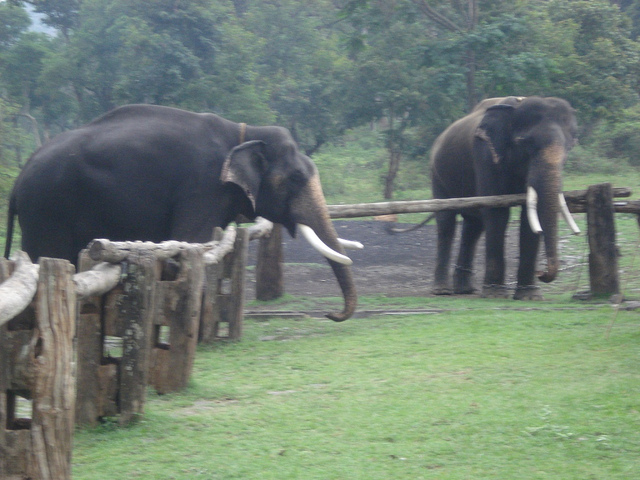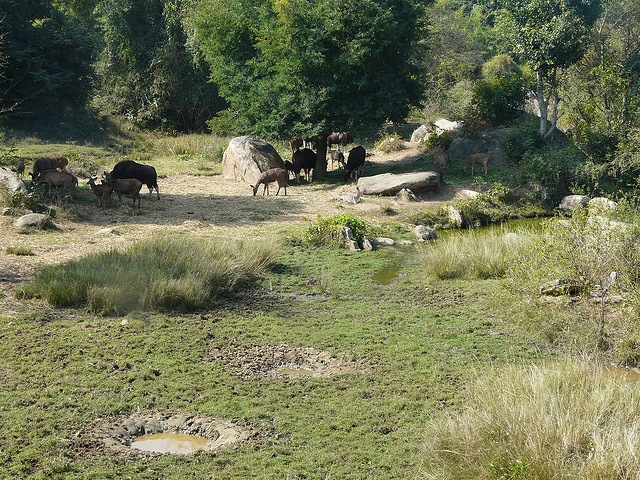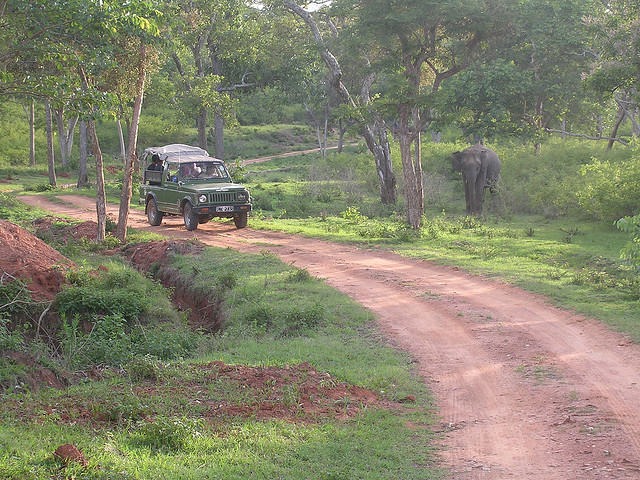Mudumalai National Park
The entry point of the Wildlife Reserve is at Theppakudu’s reception range forest office.

The entry point of the Wildlife Reserve is at Theppakudu’s reception range forest office.

One of the biggest elephant camps in South India, it is located across an iron bridge on Moyar River at a junction that leads to Masunagudi and Mysore-Ooty Highway. At this feeding camp one can have a closer interaction with elephants and see how they are fed and looked after by their mahouts. The elephants are used for timber logging and forestry chores and are brought to the camp twice in the mornings and evenings. The younger elephants are taken to a small Vinayaka Temple in the vicinity.

The Crocodile Bank is located 14 kilometers from Mahabalipuram. It was established by herpetologist Romulus Whitaker in 1976. It houses several different species of Indian and African alligators and crocodiles. They are kept in open pools that are made to resemble their natural habitat. This Crocodile Conservation Center is the most popular site to visit at Crocodile Bank. A snake farm is also located at this site. Anti-venom is produced here. The process of extracting the snake venom is a popular tourist attraction, and it allows the Irulas, the snake catcher's tribe, to make a living.
The Varagaliar Elephant Camp is in as remote of an area as is possible. It is located right on the fringe of the core forest. 21 domesticated elephants claim this camp as home. These elephants have not been trained to be used with tourists. Instead, these elephants are primarily used to assist with any conflicts that occur between wild elephants and man in the nearby Valparai Plateau. At this location it is becoming more and more common for elephants to intrude on tea gardens. It is very rare for someone to receive permission to visit this particular elephant camp.
The Kolikamuthi Elephant Camp is a rather exclusive place that elephants are kept trained and housed. There are 50 Malisar tribe families that live at this particular camp. The Malisar tribe belongs to the elephant handler's caste, so these families are especially skilled in working with these Asian elephants. The only way to travel into this remote elephant camp is by forest jeep. You must also receive special permission from the Indira Gandhi Wildlife Sanctuary Rangers to even travel into this elephant camp.
Named after the famous prime minister Indira Gandhi, this sanctuary is also referred to as the Anaimalai Sanctuary at times. It is at the core of the Nilgiri Biosphere Preserve. A wide variety of exotic animals can be seen here. Such animals include panthers, tigers, elephants, spotted deer, civet cats, and wild boars. Numerous birds can also been seen here The black headed oriole, rocket-tailed drongo, tree pie, spotted dove, and red whiskered bulbul are all birds that you could very well spot while in the sanctuary.
The Elephant Training Camp, which trains the wild elephants with the help of local tribes Kurabas, is under the Forest department. It is a scenic beauty to watch the tamed elephant bath in the river and to be scrubbed fresh by their mahouts. The mahouts will then exhibit the various commands the elephants can comply with. This can be vividly portrayed by making elephants execute some mock logging operations.
The Bannerghatta National Park is situated 22 km away from the city. A variety of fauna in the picturesque surroundings of the park can be seen. It is a reserve of lions, Indian tigers and many other mammals. Crocodiles, picnic corner, pets corner and serpentarium with lion’s safari are among the many attractions in the park. The small zoo in the park displays many zoological items.
The country’s first butterfly park was set up in the Bannerghatta National Park on 25th of November 2006. The butterfly park is spread over 7.5 acres of land and constitutes a butterfly conservatory, museum and an audio-visual room. The conservatory is made of polycarbonate roof. The living environment has been so designed that it supports 20 species of butterflies.

This is one of the best wildlife reserves in India. The park is located in a large forest located to the south of the river Kabini and is in the list of World Wide Fund's Project Tiger areas. The climate of the place supports a wide variety of flora and fauna.
The vegetation to the east of the park comprises stunted trees while the northern edges have deciduous type of vegetation. This wide diversity has encouraged the growth of different species of animals.

The Yemmedoddi Jungle Safari is a must if one is visiting Shivgiri. Varities of birds and animals can be found in this natural habitat. Tiger trails and pug marks of a tiger or panther, the sound of wild pigs are common. Other animal that can be found here are sloth bears, mouse deer and spotted deer, jackals, monkeys etc. Many natural caves found in the jungles are homes to the animals here.
Bird calls fill the air and the species include woodpeckers, finches, barbets, sunbirds, mynahs, and babblers.